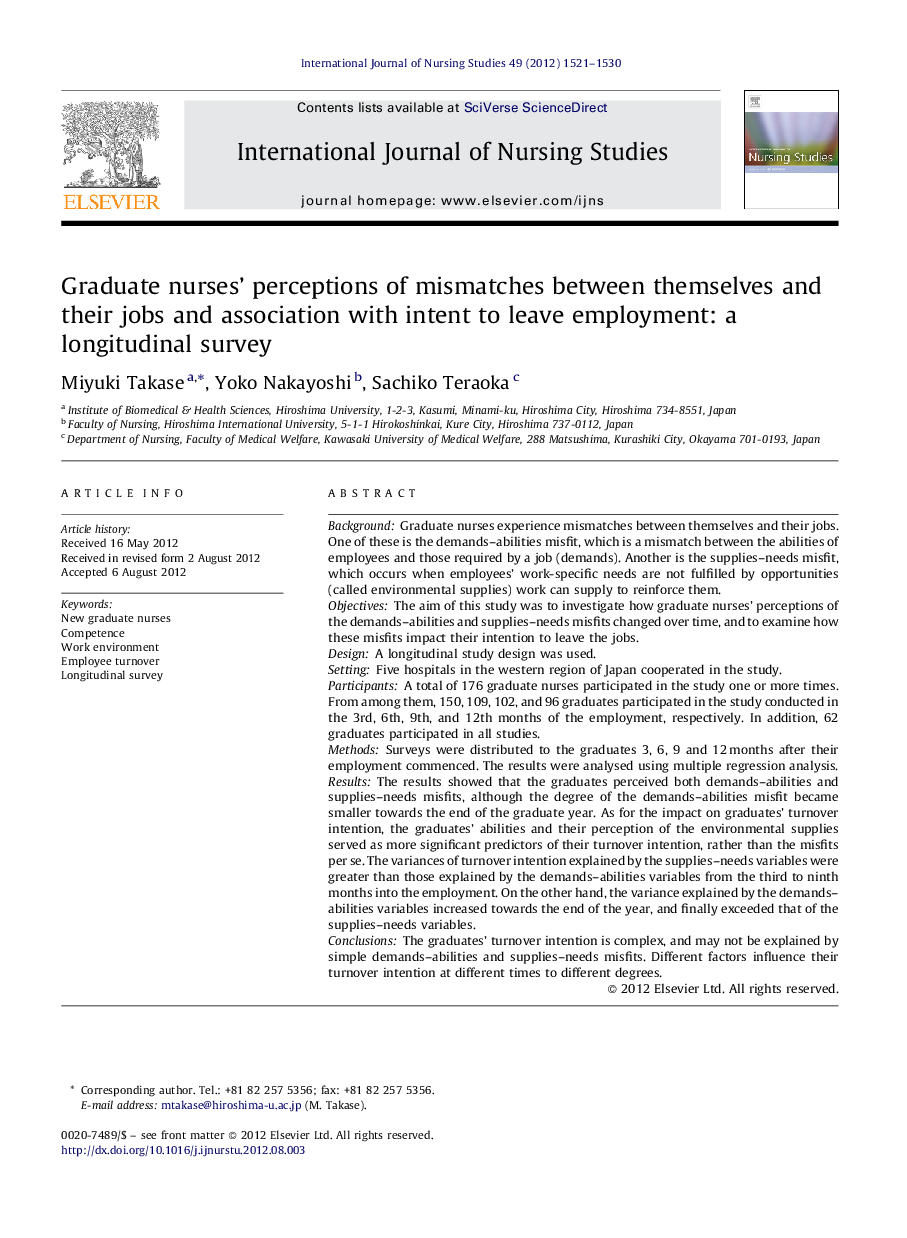| Article ID | Journal | Published Year | Pages | File Type |
|---|---|---|---|---|
| 1076447 | International Journal of Nursing Studies | 2012 | 10 Pages |
BackgroundGraduate nurses experience mismatches between themselves and their jobs. One of these is the demands–abilities misfit, which is a mismatch between the abilities of employees and those required by a job (demands). Another is the supplies–needs misfit, which occurs when employees’ work-specific needs are not fulfilled by opportunities (called environmental supplies) work can supply to reinforce them.ObjectivesThe aim of this study was to investigate how graduate nurses’ perceptions of the demands–abilities and supplies–needs misfits changed over time, and to examine how these misfits impact their intention to leave the jobs.DesignA longitudinal study design was used.SettingFive hospitals in the western region of Japan cooperated in the study.ParticipantsA total of 176 graduate nurses participated in the study one or more times. From among them, 150, 109, 102, and 96 graduates participated in the study conducted in the 3rd, 6th, 9th, and 12th months of the employment, respectively. In addition, 62 graduates participated in all studies.MethodsSurveys were distributed to the graduates 3, 6, 9 and 12 months after their employment commenced. The results were analysed using multiple regression analysis.ResultsThe results showed that the graduates perceived both demands–abilities and supplies–needs misfits, although the degree of the demands–abilities misfit became smaller towards the end of the graduate year. As for the impact on graduates’ turnover intention, the graduates’ abilities and their perception of the environmental supplies served as more significant predictors of their turnover intention, rather than the misfits per se. The variances of turnover intention explained by the supplies–needs variables were greater than those explained by the demands–abilities variables from the third to ninth months into the employment. On the other hand, the variance explained by the demands–abilities variables increased towards the end of the year, and finally exceeded that of the supplies–needs variables.ConclusionsThe graduates’ turnover intention is complex, and may not be explained by simple demands–abilities and supplies–needs misfits. Different factors influence their turnover intention at different times to different degrees.
